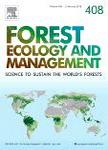版权所有:内蒙古大学图书馆 技术提供:维普资讯• 智图
内蒙古自治区呼和浩特市赛罕区大学西街235号 邮编: 010021

作者机构:Sch Field Studies Ctr Rainforest Studies POB 141 Yungaburra Qld 4884 Australia Federat Univ Australia Sch Sci Psychol & Sport POB 663 Ballarat Vic 3350 Australia
出 版 物:《FOREST ECOLOGY AND MANAGEMENT》 (森林生态学与管理)
年 卷 期:2021年第496卷
页 面:119453-119453页
核心收录:
学科分类:0907[农学-林学] 08[工学] 0829[工学-林业工程] 09[农学]
基 金:Trees for the Evelyn and Atherton Tablelands (TREAT) School for Field Studies (Centre for Rainforest Studies, Yungaburra)
主 题:Active restoration Framework Method Maximum Diversity method Natural regeneration Nurse Plantations Passive restoration
摘 要:Restoring tropical rainforests is becoming increasingly urgent. However, in most restoration plantings it is not possible to include the full suite of species found in the original rainforest. Full recovery of species composition thus depends on the dispersal and recruitment of species that are not planted. In many restoration projects, however, recruitment is dominated by a low diversity of regionally-abundant pioneer species and species with small, easily dispersed seeds. These species are characteristic of secondary rainforest and do not include the far more diverse suite of species characteristic of the original, primary rainforest. Such primary rainforest species are usually more vulnerable to the effects of fragmentation than disturbance-adapted pioneers and thus are of greater conservation concern, as well as being required for the full recovery of many important ecosystem functions. As restoring ecosystem processes is one of the central goals of restoration, this raises the question of which, if any, of the available rainforest restoration methods may be used to promote the recruitment of primary rainforest species. We compared the species composition and functional group composition of recruited trees and shrubs in a 25-year-old restoration experiment with those of the originally planted trees, and with nearby primary rainforest and secondary rainforest reference sites in an area of upland rainforest in north-eastern Australia. Our objective was to compare the performance of four commonly-used restoration methods: (i) unassisted (passive) regeneration, (ii) Pioneer Monoculture plantings, (iii) Framework Method plantings, and (iv) Maximum Diversity plantings. The species composition and functional group composition of recruited individuals within all treatments were similar to those of secondary rainforest and highly dissimilar to both primary rainforest and plantations. Pioneer species, species with small, biotically-dispersed diaspores, and canopy trees we